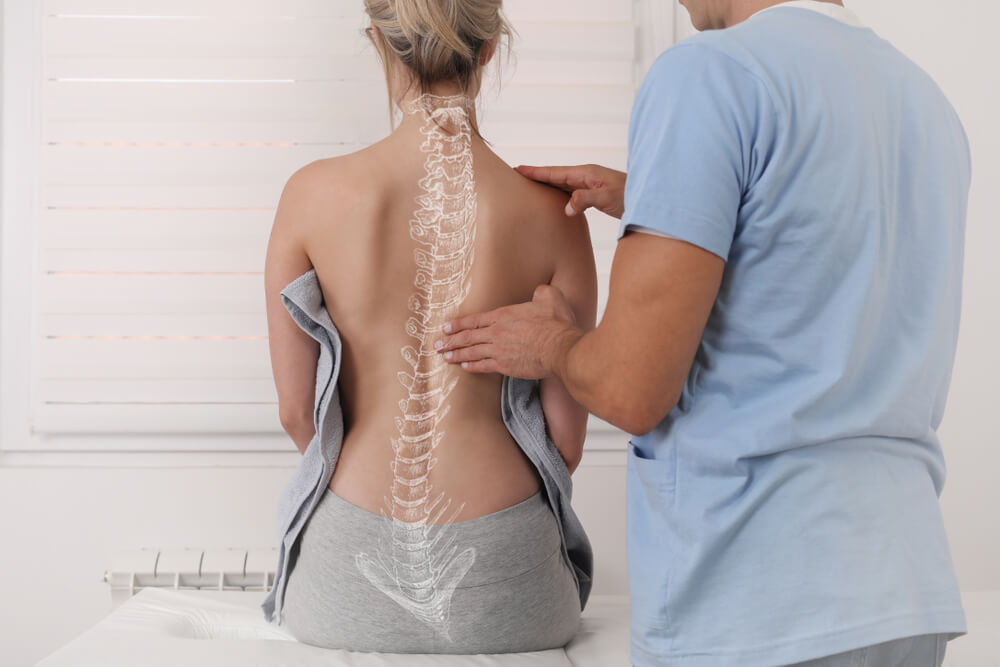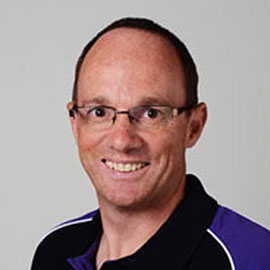Our spine, or backbone, is a series of small bones (vertebrae) stacked from the top of the neck to the tailbone and separated with shock-absorbing discs. When observing from the side, a spine should have gentle, sloping curves that, along with the discs, help the body manage the stress of movement and gravity. The rear view of the spine should show a straight line down the middle of the back.
There is a disruption to the spine in curvature cases in either the natural side-view curves or rear-view spinal line. Exaggerated curves usually indicate the presence of lordosis, kyphosis, or scoliosis.
Can massage be used to help scoliosis, lordosis, and kyphosis?
Depending upon the type of spinal curve, a medical professional can identify the presence of scoliosis, lordosis, or kyphosis. In scoliosis, an S or C shape is visible when viewing the spine from the rear. In lordosis (swayback), there is an exaggerated curve at the lower range. In kyphosis (hunchback), there is a 50-degree or more rounding of the person’s upper back. As a massage therapist, you will likely encounter each of these conditions. In some cases, a person displays more than one.
Treating scoliosis pain and discomfort
Scoliosis usually presents during the growth spurt before puberty. It is quite common, but most cases are so mild as to display few or no symptoms. In extreme cases, these spinal deformities become more severe as the child grows, and, in the past, braces and spinal fusion surgery were the most common treatment options. New research has illuminated the benefits of less-invasive treatment options, including massage therapy.
Massage therapy is known to reduce chronic back pain for many patients. Skilled massage therapists combine various massage strokes, positions, pressure, and stretches that rebalance the muscles surrounding the spine and other parts of the body. While massage therapy cannot cure scoliosis nor correct it, it often alleviates pressure on the spine caused by the curvature.
Treatment of kyphosis and lordosis
Thoracic kyphosis, or just kyphosis, is characterised by an excessive curvature at the mid-back’s natural curve and often a poking chin. In lordosis (hunchback), specific hip and lower-back muscles tighten and abdominal muscles and hip extensors weaken. The combination of which causes an inward curve in the mid-lower back.
Both kyphosis and lordosis occur naturally to a certain degree in everyone as the spine’s natural shape has a slight curve at the top and the bottom. Only when these curves become exaggerated can they become a problem.
A sedentary posture can cause both, and they are becoming more common as people spend more time using mobile devices. People with these ailments may suffer a range of symptoms from mild discomfort to debilitating pain; others suffer no symptoms. Kyphosis is more common in teens and older adults, but it is not limited to these age groups.
For some people with kyphosis or lordosis, becoming more conscientious about posture and flexing the spine can help to straighten the curve and eliminate the need for medical attention. For others, this curve is the source of excruciating back pain, significantly if the muscles tighten or spasm. Massage therapy can loosen these tight muscles and help alleviate back pain.
Massage therapy can help lengthen and stretch the muscles that have become tight or hypertonic. I have used PNF and MET techniques to retrain the nervous system to activate and strengthen the weak muscles. Massages of longer duration are sure to activate your patient’s parasympathetic nervous system and, therefore, will put their whole body in a state where it can heal.
Your goal when treating lordosis is to strengthen the core muscles while loosening the lower back — an exercise routine to tighten the abdominal muscles combined with massage therapy is often the most effective approach.
You will find the muscles surrounding the curvature extraordinarily tight and often very painful.
CTR and CLR massage techniques
The Contractual Tendon (CTR) and Ligament (CLR) Release taught in the Deep Tissue & Common Injuries Massage Courses bring great relief and quite often a lessening of curvature. Patients need regular massage treatment, usually once a month, to receive the full benefit of these treatments.
Examples of treatment
In the worst case lordosis (Anterior Pelvic Tilt) I treated, the woman’s hips were so badly misaligned, her lumbar spine was not only forward but had begun to rotate severely. Her surgeon would not operate in fear her condition would worsen, or she would be wheelchair-bound.
The first time I saw her, I performed a thorough therapeutic massage treatment plus the sciatic treatment we teach in our Deep Tissue & Common Injuries Massage Course. After her therapy, she raised her knees for the first time and could put her slacks on without sitting on a chair. We were both extremely pleased with the result.
She came to regular massage treatment over the next 12 months. I performed CTR and CLR, and the rotation in her lumbar spine returned, changed her posture, and eased her pain. When it was clear the curvature and rotation had moved and released as much as it could, her surgeon was willing to operate. He successfully did so, and she went on to lead an everyday life. She continued to receive a regular therapeutic massage.
With regular massage treatment, even miracles are possible.
Discover Massage Australia teaches therapists to use unique techniques such as these. The training offered in every massage course equips massage therapists with the massage skills they need to help our patients in a stressed-out world.

